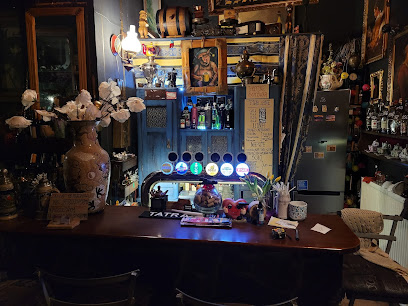
Explore the Majestic Ostrężnik Castle
Discover the enchanting Ostrężnik Castle, a historic gem in Złoty Potok, Poland, surrounded by stunning natural beauty and rich cultural heritage.
Ostrężnik Castle stands as a stunning representation of Poland's rich history and architecture. Nestled in the scenic Złoty Potok region, this castle is a must-visit for tourists seeking both beauty and culture. With its picturesque surroundings and impressive architecture, it offers a unique glimpse into the past while providing a tranquil escape into nature.
A brief summary to Ostrężnik Castle
- Złoty Potok, 42-253, PL
- Visit website
- Monday 12 am-12 am
- Tuesday 12 am-12 am
- Wednesday 12 am-12 am
- Thursday 12 am-12 am
- Friday 12 am-12 am
- Saturday 12 am-12 am
- Sunday 12 am-12 am
Local tips
- Visit during the early morning or late afternoon for the best lighting for photographs.
- Check for any special events or guided tours that may enhance your visit.
- Wear comfortable shoes as the castle grounds can be uneven and may require walking.
- Bring a picnic to enjoy in the scenic surroundings for a relaxing break.
Getting There
-
Car
From Katowice, take the DK86 road towards Złoty Potok. Follow the DK86 for approximately 40 kilometers. Once you reach Złoty Potok, look for signs directing you to Ostrężnik Castle. The castle is just outside the main village area, and there is a parking lot nearby for visitors. Keep in mind that there may be a parking fee, which typically ranges from 5 to 10 PLN.
-
Public Transportation
To reach Ostrężnik Castle using public transportation, take a train from Katowice to Złoty Potok. Trains run frequently, and the journey takes about 30-40 minutes. Once you arrive at Złoty Potok station, you can either walk to the castle, which is approximately 2 kilometers away, or take a local taxi for around 20 PLN. Follow the signs towards the castle as you walk; the route is well-marked and offers scenic views.
-
Taxi
If you prefer a more direct route, you can use a taxi service from any location in Silesia. Taxis can be booked via apps or directly from taxi stands. The fare from Katowice to Ostrężnik Castle may vary, but expect to pay around 100-150 PLN depending on traffic and time of day.
Discover more about Ostrężnik Castle
Iconic landmarks you can’t miss
Złota góra
23.0 km
Discover the stunning views and serene trails of Złota Góra, a breathtaking mountain peak in Czestochowa, perfect for hikers and nature lovers.

Plac Papieża Jana Pawła II
24.4 km
Discover the vibrant atmosphere of Plac Papieża Jana Pawła II, the central town square of Czestochowa, steeped in history and culture.

Dom Adolfa Frankego
24.8 km
Discover the historical significance and architectural beauty of Dom Adolfa Frankego in Czestochowa, a gem of Polish heritage.

plac Pamięci Narodowej
24.9 km
Experience the vibrant atmosphere and rich history at plac Pamięci Narodowej, the central square of Częstochowa, Poland.
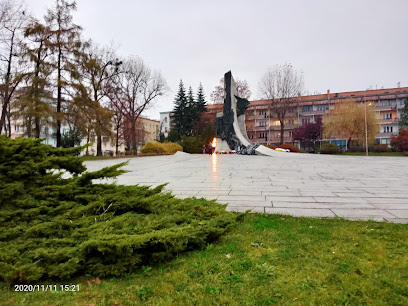
Mural
25.0 km
Explore the vibrant Mural in Czestochowa, a stunning urban art piece that reflects the city’s rich culture and artistic spirit.

Ratusz
25.3 km
Explore Ratusz in Czestochowa – a stunning architectural gem that embodies the city's rich history and vibrant culture, perfect for your travel adventures.

Kule Cemetery in Częstochowa
25.4 km
Explore Kule Cemetery in Czestochowa, a serene and historical site that reflects Poland's rich cultural heritage through its beautiful gravestones and tranquil landscape.

Park im. Staszica w Częstochowie
25.9 km
Explore the natural beauty and tranquility of Park im. Staszica in Częstochowa, a perfect escape for nature lovers and families.

7 Kamienic
25.9 km
Explore the architectural beauty and rich history of 7 Kamienic, a must-see tourist attraction in the heart of Czestochowa, Poland.

Dom narodzin Haliny Poświatowskiej
26.0 km
Discover the birthplace of Halina Poświatowska in Częstochowa, a cherished site for literature enthusiasts and a glimpse into Poland's literary legacy.

Muzeum Częstochowskie - Pawilon Wystawowy
26.0 km
Explore the rich artistic heritage of Czestochowa at Muzeum Częstochowskie, showcasing diverse artworks and cultural exhibitions in a vibrant setting.

Rynek Wieluński
26.6 km
Explore the vibrant atmosphere of Rynek Wieluński in Częstochowa, a historical town square filled with culture, cuisine, and charm.

Zamek Ogrodzieniec
26.9 km
Discover the captivating ruins of Zamek Ogrodzieniec, an iconic castle in Poland that offers breathtaking views and a glimpse into medieval history.

Eagles' Nests Landscape Park
26.9 km
Explore Eagles' Nests Landscape Park: A breathtaking ecological park in Poland, perfect for hiking, sightseeing, and immersing in nature's beauty.

Cemetery St. Rocha
27.5 km
Explore the historical and serene beauty of Cemetery St. Rocha in Czestochowa, a tranquil resting place rich in local heritage and artistry.

Unmissable attractions to see
Brama Twardowskiego
1.6 km
Discover the enchanting Brama Twardowskiego in Złoty Potok, a stunning natural attraction steeped in folklore and breathtaking landscapes.
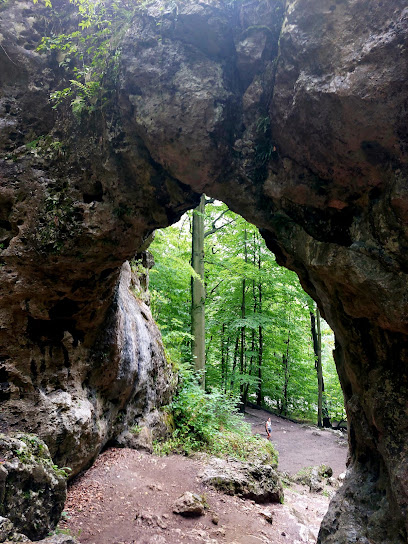
Niedźwiedzia grota
3.2 km
Explore the enchanting Niedźwiedzia Grota, a stunning cave in Złoty Potok, Poland, renowned for its breathtaking rock formations and natural beauty.
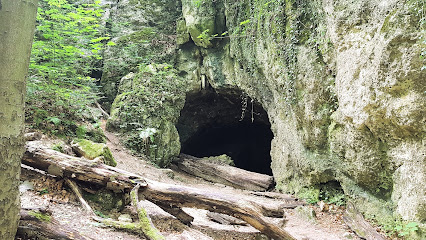
Regional Museum. Zygmunt Krasinski
5.2 km
Explore the enchanting Regional Museum Zygmunt Krasinski in Złoty Potok, where local history and culture come alive through captivating exhibits.
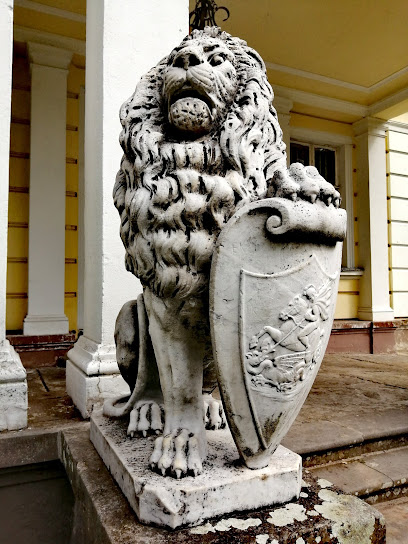
Mirow Castle - ruins
8.5 km
Explore the enchanting ruins of Mirow Castle, a medieval fortress steeped in history and surrounded by breathtaking natural beauty.

Royal Castle Bobolice
9.5 km
Discover the enchanting Royal Castle Bobolice, a historical gem surrounded by picturesque hiking trails and rich Polish heritage.

Castle in Olsztyn
12.2 km
Discover the enchanting Castle in Olsztyn, a historic fortress offering breathtaking views, rich history, and scenic hiking trails in Poland.

Jaskinia Głęboka
14.1 km
Explore the breathtaking beauty of Jaskinia Głęboka, a stunning cave in Podlesice, showcasing nature's artistry through its magnificent rock formations.

Center for Natural and Cultural Heritage of the Jury
14.2 km
Explore the vibrant landscapes and rich history at the Center for Natural and Cultural Heritage of the Jury in Poland's stunning Jura region.

Włodowice Palace
14.4 km
Explore Włodowice Palace, a stunning Polish gem showcasing rich history and elegant architecture amidst beautiful gardens.

Punkt widokowy
19.7 km
Discover the stunning vistas of Czestochowa at Punkt widokowy, a serene viewpoint perfect for capturing unforgettable memories.

Pałacyk Hantkego w Częstochowie
21.1 km
Explore the splendid Pałacyk Hantkego in Częstochowa, where history meets elegance in a beautifully preserved manor and enchanting gardens.

Skała Balika
21.5 km
Experience the breathtaking natural beauty of Skała Balika in Czestochowa, a perfect destination for nature lovers and adventure seekers.

Aleja Pokoju
21.7 km
Discover the beauty and charm of Aleja Pokoju, a vibrant tourist attraction in Częstochowa, Poland, perfect for relaxation and exploration.

Próg wodny
22.0 km
Experience the thrill of water sports at Próg Wodny in Czestochowa, where adventure meets stunning natural beauty.
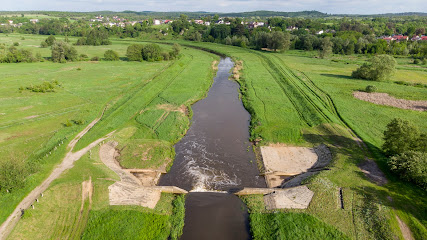
Muzeum Pontyfikatu Jana Pawła II
22.8 km
Explore the profound legacy of Pope John Paul II at the Muzeum Pontyfikatu Jana Pawła II, a must-visit heritage museum in Częstochowa, Poland.

Essential places to dine
Gospoda Złoty Garniec
22.3 km
Discover Gospoda Złoty Garniec in Częstochowa for an unforgettable taste of traditional Polish cuisine in a family-friendly atmosphere.

POPAS - Restauracja, przyjęcia i imprezy zorganizowane Częstochowa
24.4 km
Discover authentic Polish cuisine at POPAS in Częstochowa - a family-friendly restaurant offering catering services for all occasions.

Restauracja Rycerska
25.1 km
Experience authentic Polish flavors at Restauracja Rycerska in Częstochowa - where tradition meets taste.

Cafe Belg
25.2 km
Discover Café Belg in Częstochowa – where culinary tradition meets modern taste in a cozy setting perfect for all travelers.

Gospoda Kwaśnica
25.3 km
Experience authentic Polish cuisine at Gospoda Kwaśnica in Częstochowa – where tradition meets flavor in every bite.
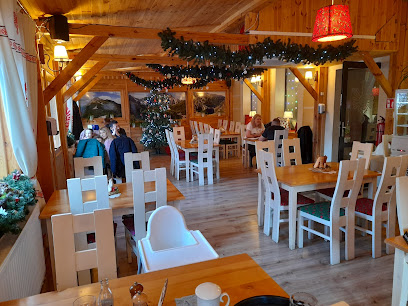
PierożeQ
25.3 km
Experience authentic Polish cuisine at PierożeQ in Częstochowa - home of the best pierogi and warm hospitality.

Pizzeria Felicita
25.4 km
Discover authentic Italian flavors at Pizzeria Felicita in Częstochowa—perfect for dine-in or takeaway!

La Vita Da Re
25.5 km
Discover the essence of Italy with mouthwatering pizzas and authentic dishes at La Vita Da Re in Częstochowa.

Restauracja Ecru
25.5 km
Discover authentic flavors at Restauracja Ecru in Częstochowa - where traditional meets contemporary in a cozy dining experience.

Topollino
25.6 km
Experience authentic Polish flavors at Topollino in Częstochowa – where every meal tells a story.

Cafe & Restaurant Dobry Rok
25.8 km
Discover Café & Restaurant Dobry Rok in Częstochowa: where family-friendly dining meets exquisite Italian and Polish cuisine.

Dom Pizzy i Wina
25.8 km
Experience authentic Italian flavors at Dom Pizzy i Wina in Częstochowa—delicious pizzas and exquisite wines await!

U Braci
26.0 km
Experience authentic Polish cuisine at U Braci in Częstochowa – where tradition meets modern dining excellence.

Yem Tu oriental food
26.2 km
Discover authentic Pan Asian cuisine at Yem Tu in Częstochowa—where every dish tells a story of flavor and tradition.

Pireus
26.4 km
Experience authentic Greek cuisine at Pireus Restaurant in Częstochowa—where Mediterranean flavors meet warm hospitality.

Markets, malls and hidden boutiques
Galeria Jurajska
24.0 km
Galeria Jurajska: Your ultimate shopping experience in Częstochowa, combining fashion, food, and fun under one roof.

Sprzedaż Towarów
24.5 km
Explore Sprzedaż Towarów in Częstochowa for unique souvenirs and local crafts that embody the spirit of Polish culture.

Just Unique
24.5 km
Discover unique fashion pieces at Just Unique, a charming clothing store in Częstochowa's historic Stare Miasto, perfect for every style enthusiast.

Skorpion
24.7 km
Discover stylish apparel at Skorpion, Częstochowa's go-to clothing store, blending local culture with contemporary fashion trends.

Bisi Boutique
24.7 km
Bisi Boutique in Częstochowa offers a unique selection of contemporary clothing, perfect for tourists seeking stylish and local fashion finds.

Retro Shop
24.7 km
Explore Retro Shop in Częstochowa for a unique shopping experience filled with vintage fashion treasures.

Ki-Ki
24.8 km
Explore Częstochowa's fashion scene at Ki-Ki, where trendy clothing meets local charm, perfect for every style seeker.

Hot Look
24.8 km
Discover the latest fashion trends at Hot Look, a stylish store in Częstochowa, offering a unique selection of clothing and accessories.

Butik Vivre
24.8 km
Discover unique women's fashion at Butik Vivre in Częstochowa, where style meets sophistication in a charming boutique setting.

Art Decora
24.8 km
Explore Art Decora in Częstochowa for an exquisite selection of home goods, chinaware, and captivating art pieces that inspire creativity.

Butik modnapolka Częstochowa
24.8 km
Explore unique fashion at Butik modnapolka in Częstochowa, a boutique offering stylish clothing and personalized service for every fashion lover.

Pepco
24.8 km
Explore Pepco in Częstochowa for affordable fashion, children's clothing, and toys in a vibrant shopping atmosphere.

To tu
24.8 km
Discover unique Polish treasures at To tu, a charming novelty store in Częstochowa, filled with quirky gifts and local craftsmanship.

Yey...
24.8 km
Discover Yey..., a fashionable clothing store in Częstochowa, where local style meets contemporary trends for an exceptional shopping experience.

OUTLET CENTRUM WYPRZEDAŻY
24.8 km
Discover incredible deals and a wide selection of products at Outlet Centrum Wyprzedaży, Częstochowa's ultimate shopping destination.

Essential bars & hidden hideouts
Bar Piwny Karolinka
20.4 km
Discover the charm of Bar Piwny Karolinka, a cozy bar in Zawiercie offering a delightful selection of drinks and a welcoming atmosphere.

RED PUB
21.3 km
Enjoy the best of Częstochowa nightlife at RED PUB, where delicious food meets vibrant entertainment in a lively pub atmosphere.

Eliksir Cocktail Bar
21.5 km
Eliksir Cocktail Bar: A vibrant lounge in Zawiercie offering expertly crafted cocktails and a lively atmosphere for unforgettable evenings.

Bar Kos
21.8 km
Experience the vibrant atmosphere of Bar Kos in Częstochowa, where local charm meets a fantastic selection of beverages.

Piwiarnia Częstochowa
25.0 km
Experience the vibrant atmosphere of Piwiarnia Częstochowa, where local brews and hearty meals meet lively entertainment in the heart of Częstochowa.
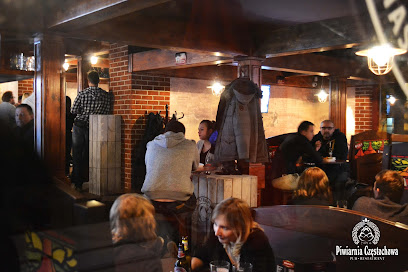
Pub Lucky Saloon
25.0 km
Discover the lively atmosphere of Pub Lucky Saloon in Częstochowa, where craft beers and local charm blend seamlessly for an unforgettable experience.

Lomobar
25.0 km
Experience the vibrant atmosphere of Lomobar, a premier brewpub in Częstochowa serving a delightful selection of craft beers and local brews.

Micro KLIMAT - Bar
25.0 km
Discover the lively atmosphere and diverse drink selection at Micro KLIMAT - Bar, a must-visit spot in Częstochowa for travelers seeking local flavor.

Alchemik
25.1 km
Experience Częstochowa's culinary delight at Alchemik, where delicious food and a cozy atmosphere come together for an unforgettable dining experience.

Piwiarnia w Alejach
25.1 km
Experience the heart of Częstochowa at Piwiarnia w Alejach, where local craft beers and vibrant ambiance create unforgettable moments.
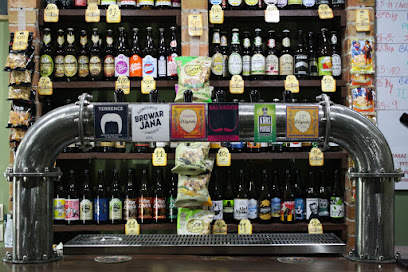
Pub Sportowy Stacherczak
25.1 km
Discover the lively spirit of Częstochowa at Pub Sportowy Stacherczak, where sports and camaraderie come together in a vibrant bar atmosphere.

SpritzPub
25.1 km
Discover the vibrant nightlife of Częstochowa at SpritzPub, where locals and tourists mingle over a fantastic selection of drinks.

RESTO & PUB Szafa Gra
25.2 km
Discover the vibrant atmosphere and delicious offerings at RESTO & PUB Szafa Gra in Częstochowa, where culinary delights meet local culture.

Ministerstwo Śledzia i Wódki
25.2 km
Discover the flavors of Poland at Ministerstwo Śledzia i Wódki, a charming gastropub in Częstochowa, renowned for its herring and vast vodka selection.

Dekadencja
25.2 km
Discover Częstochowa’s vibrant brewpub scene at Dekadencja, offering craft beers and delicious bites in a cozy atmosphere.
